- Home
- Priscilla Royal
Wild Justice Page 21
Wild Justice Read online
Page 21
There was too much to say, and no time left to say it. The two women looked at each other with mutual affection. If they had differences of opinion, they would have an eternity to debate them once their souls met again. For now, neither had any desire to do so.
Eleanor broke the silence first. “I have grown confident that your son will become a fine counselor to our king,” she said, “now that God has allowed me to meet his most remarkable mother.”
“And I believe it as well, for I have met his most exceptional aunt.” Prioress Amicia bowed her head.
Eleanor knew it was time to depart. She stood.
Prioress Amicia forced herself to rise as well. “Grant me your blessing,” she said, “for I must soon stand before the terrible face of God. I swear to you that I shall confess all evil of which I am guilty and hope for mercy in those transgressions I am too blinded by sin to acknowledge. Your blessing would give me courage to accept His sentence.”
Without hesitation, Eleanor gave it, then took the dying woman into her arms and kissed her on both cheeks.
With an expression warm with gratitude, Prioress Amicia gently rested her fingers on the arm of her son’s aunt, and then turned away to face the small altar.
Prioress Eleanor left the small room without speaking and closed the door. Although she longed to do so, she did not look back at this woman whom she would never again see in this world.
***
Not long after, the trio of monastics, surrounded by their armed guard, began their long journey home to Tyndal Priory. When Mynchen Buckland Priory had faded deep into the mists of Somerset, their sadness over the tragic events at the priory also began to dull. The sun may have failed to shine for days, but spirits slowly rose.
They did for all, that is, except Prioress Eleanor. She smiled with courtesy but no mirth when Brother Thomas tried to distract her with a witty tale. Even Sister Anne found her friend uncommonly distant.
Eleanor knew that she, too, would eventually tuck her grief over all the events at the Hospitaller priory deep into her heart and laugh again with honest ease. But she also feared she might never forgive herself for solving the crimes but failing to find the balm needed to heal the fear and sorrows of Janeta, the maid.
Author’s Notes
When I introduced Hugh’s illegitimate son, Richard, in Tyrant of the Mind, I had not yet become acquainted with the boy’s mother. After I brought Richard back as a teenager in Land of Shadows, however, she rather insistently tapped my shoulder. Wasn’t it finally time for us to get to know each other?
I’m so glad we did. Sadly, I only met her at the end of her life but found her quite fascinating as well as complex, although certainly not without faults. In this tale, she also graciously allowed me to introduce the Order of the Hospital of Saint John of Jerusalem, commonly called the Hospitallers. For that, I owe her special thanks, as authors must with the surprising gifts their characters always seem to bring.
The Templars have become very popular, especially in fiction, while the Hospitallers have gotten shorter shrift. That is undeserved.
Unlike other military Orders, the Hospitallers have survived in various forms to the present time. As an example, the nondenominational St. John Ambulance Brigade is one particularly famous descendant. After the Hospitallers left Acre for Rhodes and Malta, they showed remarkable ability to adapt. When soldiers became less important, the Order built both commercial vessels and a naval fleet. Eventually, they also shifted away from their militaristic role and back to their original charitable roots.
There is so much I should write about the history of this Order, both in the Medieval era and beyond, but that would require more than any author can do in short notes. In my usual bibliography at the end, I have listed a number of fascinating volumes of various lengths and detail by scholars. Many include illustrations, photographs, and archaeological details. These should satisfy curiosity, no matter what the specific interest.
Therefore, I shall be brief here, and, instead of discussing the military and hierarchical parts of the Order, I will concentrate on the lesser-known, original purpose: charity to all the poor and disadvantaged as well their remarkable medical work. I confess that this decision is also a bit personal. In this troubled era of ours, I find the enlightened work done by a Medieval Order, at a time many view as far more ignorant and violent than our own, to be rather heartening.
The Order developed from a hospital already in Jerusalem when the city was captured by Christians in 1099. The date this institution was originally founded is unclear, but it was run by a small group of monks, possibly lay brothers, from a nearby abbey. The Order itself began sometime before 1113 when these brothers broke away from their specific abbey. Their leader, Gerald, origins unknown, is acknowledged as the first Master of what formally became the Order of the Hospital of Saint John of Jerusalem.
Although emphasis on caring for the poor has always been a stated Christian principle, the unique dedication of the Hospitallers to this mission, from the time of Gerald, presages the movement later founded by St Francis of Assisi. The Hospitaller devotion was so profound they referred to themselves as the “serfs of the poor” and made no distinction if the individual in need was male, female, orphan, Christian, Jewish, or Muslim. Such inclusive charity was unusual.
The increasing number of pilgrims to the sacred sites in Outremer made medical and charitable care an obvious need. Not only was any travel long and arduous, but the unstable political situation and religious quarrels (of several varieties) added to the dangers. Many of the pilgrims were poor, sick, or became so in the course of their journey due to unfamiliar diseases, debilitation, attacks, robberies, or unexpected expenses and exorbitant prices charged by the usual commercial predators. If they made it in one piece to Jerusalem, and later Acre, they were lucky indeed. If they were sick or impoverished, they could turn to the Hospitallers.
The Jerusalem and Acre hospitals may have been different in size, but the method and quality of care was the same. Other than lepers, cared for at other hospitals in the cities, all were welcomed. Men and women were segregated. There was a specific maternity ward as well as one for critical cases. If the number of sick exceeded the beds, the attending brothers gave up their own and slept on the floors. Hospitaller servants went out into the city to bring in those too sick to make it to the hospital. A portable tent, staffed with surgeons and other medical personnel, was taken to battles for the care of the wounded, and if these needed additional care, they were transported to the closest hospital in an early form of an ambulance service. All Hospitallers, including brother knights, were required to give up their horses and walk if the sick needed the animals for transportation.
The care given was incredibly expensive even for the time. The sick had individual beds with feather mattresses and a diet rich in fresh meat, fruits, and vegetables. There was a separate kitchen for those with digestive problems, and provision was made for the patients with other dietary restrictions such as Jews and Muslims. If a patient required help getting to the latrine, there was a servant to assist, as well as one to change sheets every two weeks, bathe the patient, and even remove calluses with a pumice stone after feet were washed in hot water.
Needless to say, this explains why the main purpose of Hospitaller priories outside of Outremer was to manage their properties well so a great deal of money could be sent to the hospital work in Outremer. A much smaller portion was required by the brother knights and brother sergeants for battle costs.
From our point of view, the physicians, in specific, were few in number. Only four served in Jerusalem, a hospital that had the capacity to house two thousand patients. They were also, not surprisingly, Christian. That said, the Order welcomed medical caregivers from other faiths if their expertise was required in special situations or emergencies when the hospital had more patients than usual. Muslim doctors, for instance, were renowned for eye car
e.
Although there is some debate about how much Hospitaller care was influenced by the expertise found amongst local Jewish and Muslim practitioners, there is a strong suggestion that doctors have always been doctors and thus shared knowledge because they cared about improving treatment. Standard medical practices seem to have been based on the medical school teachings at Salerno that emphasized cleanliness, good diet, rest, and attentive nursing.
As one last comment about general Hospitaller care in Outremer, I will mention a bit about their charitable work with women and children. If they discovered a woman in the city too poor to clothe her children, they sent alms and clothing. If the mother was too sick to care for her children, they arranged for substitute care. In the maternity ward, a small cot was placed next to the new mother so the baby would be close by. Female servants cared for the new mothers, washed the baby after birth, and wet-nurses were provided for those who could not nurse themselves. If a mother was forced to abandon her baby, for whatever reason, the Order had an orphanage to raise the child, teach him or her a useful skill, and give them all the choice, at a suitable age, to remain with the Order or go out into the world.
Since the Hospitaller Order was service-oriented, unlike the contemplative Benedictines, they observed the more flexible Rule of St. Augustine in order to accommodate the needs of their hospital and charity work within the community. Contact with the secular world by both genders was common, and, as a consequence, their strict adherence to the vow of chastity was often questioned. Unlike other Orders, Hospitaller nuns and brothers were allowed to own a few personal items, but horses and armor were retained by the Order when the brother knight using them died.
Unlike other military Orders, women seemed to have always been very welcomed by the Hospitallers. They usually joined because they had brother knights as family members and were therefore of aristocratic birth. This meant they brought lands or rents with them to the Order and had wealthy friends and family who were inclined to donate. Some women may also have been drawn by the charitable element.
Brothers and nuns were housed separately. Often, the women were under the control of the male prior, also known as a commander. Sometimes the prioress, who was elected by her nuns, controlled the finances of her own house. Occasionally, the prioress was also called a commander, like her male counterpart in the Order, but this was rare. All Hospitaller houses in England were under the rule of the Prior of England in Clerkenwell, who was responsible for discipline, collecting priory tithes, approval of elections, and providing spiritual as well as temporal guidance. In cases where a religious was convicted of some offense in the local priory Chapter, the Prior of England had the right, especially in serious offenses, to determine punishment.
There is very little documentation discussing the role of women in hospital care. Brothers were in charge of the wards in Outremer, but male and female paid servants tended the patients. Servants of both genders made beds, washed patients, and cooked, although men and women were segregated so it might be plausibly assumed that men cared for men, and women for women. Since conventional wisdom stated that women provided the best care of children, however, it is thought that the maternity ward and orphanage were under the supervision of a woman. Rather than a paid servant, this may have been a lay or, much less likely, a professed sister. In the case of Sister Richolda, I thought it realistic to make her a servant in Acre and to assume that midwives, not doctors, regularly treated birthing mothers.
The Mynchen Buckland Priory (also called a preceptory) in my story was a real place. The location rests in a small valley in Somerset at Lower Durston. Although the buildings no longer exist, vague earthworks remain, part of the wall of a barn, an unattached stone window, and much of the large fishpond area with small islands. The main buildings, as Brother Thomas notes, were on high ground. A small priory or commandery of brothers was placed next door.
The main priory originally belonged to a group of Augustinian canons, but, in approximately 1185, they were removed and the property given to the Hospitallers to establish a centralized priory for their English nuns. This was done by King Henry II, a man who seems to have had his hand in everything, and the given reason for the eviction of the canons sounds very similar to why the Benedictine nuns were removed from Amesbury Priory so the Order of Fontevraud could move in: bad behavior on the part of the original resident religious. In both instances, the alleged sins of the displaced have not been convincingly well-documented.
In short order, all Hospitaller nuns in England were moved to Mynchen Buckland. From an administrative viewpoint, this made sense because most commanderies had very few nuns, and these were surrounded by a much larger number of brothers. From a religious standpoint, it satisfied a Church that was growing ever more uncomfortable with the temptations men faced when women, albeit religious ones, were too close by.
By 1338, there were fifty nuns in residence at Mynchen Buckland and six brothers. Since I have no information on how many were there in 1282, I made the assumption that the number of both would be even fewer. There were documented and ongoing tensions between the nuns and brothers. The brothers resented having to pay for the chaplains who served the nuns as well as their shared steward. The nuns argued, with documented justification, that they did not have enough income to pay for their own expenses as it was. In any case, all commanderies had to send a portion of their income to the Prior of England to fund the costs of the Order overseas. That the fictional Brother Damian was taking a little cream off the top would have been a serious offense.
I must apologize to the Medieval Order for making the Mynchen Buckland religious community the scene of murders and presenting some of the members as less than admirable suspects. Doing so is the curse of the mystery writer and in no way reflects my opinion of the Hospitallers. Their Medieval history is impressive, and their charitable work was commendable.
Although I wish Sister Richolda had existed, none of the members of the monastic community in my story ever did. In 1280, the real prioress was Alienor de Actune, but the next name does not occur until 1292. Since I do not know whether Alienor de Actune was prioress until 1292, or there were others unnamed during those years, I took license and inserted Amicia and Emelyne. In the men’s house, the preceptor or commander in 1281 was Richard de Brampford with the next name mentioned in 1321. Again, I inserted Damian, and hope I have not insulted history too much.
Bibliography
The following are books which I found informative and fascinating on Hospitaller history in general and the priory at Mynchen Buckland in specific. I would also like to give special thanks to the Taunton Visitor Centre who referred me to the Somerset Heritage Centre. The archivist, Graeme Edwards, at the Heritage Centre provided me with a link to their online maps, dating from the nineteenth century, and other data which provided invaluable information about the area around the old priory. It is also thanks to Mr. Edwards that I did not make a terrible geographical mistake and move a stream to a place it never existed!
Women in the Military Orders of the Crusades, by Myra Miranda Bom; Palgrave Macmillan, 2012.
The Hospitallers, the Mediterranean and Europe (Festschrift for Anthony Luttrell), edited by Karl Borchardt, Nikolas Jaspert, and Helen J. Nicholson; Ashgate, 2007.
The History of Mynchin Buckland, Priory and Preceptory, in the County of Somerset, by Thomas Hugo; Leopold Classic Library, 1861.
Hospitaller Women in the Middle Ages, edited by Anthony Luttrell and Helen J. Nicholson; Ashgate, 2006.
The Knights Hospitaller, by Helen J. Nicholson; Boydell Press, 2001.
Knight Hospitaller (1) 1100-1306 (Warrior Series), by David Nicolle and illustrated by Christa Hook; Osprey Publishing, 2001.
Knights of Jerusalem, the Crusading Order of Hospitallers 1100-1565, by David Nicolle; Osprey Publishing, 2008.
Hospitallers, the History of the Order of St. John, by Jonathan Riley-Smith; Hambledon Pres
s, 1999.
The Knights Hospitaller in the Levant, c.1070-1309, by Jonathan Riley-Smith; Palgrave Macmillan, 2012.
Excavations at the Priory of the Order of the Hospital of St. John of Jerusalem, Clerkenwell, London, by Barney Sloane and Gordon Malcolm; Museum of London Archaeology Service, 2006.
A Cartulary of Buckland Priory in the County of Somerset, edited by the Rev. F. W. Weaver, M.A., F.S.A.; University of Michigan Libraries Collection, 1909.
More from this Author
For other books, upcoming author events, or more information please go to:
www.poisonedpenpress.com/Priscilla-Royal
Contact Us
To see more Poisoned Pen Press titles:
Visit our website: poisonedpenpress.com/
Request a digital catalog: [email protected]

 The Twice-Hanged Man
The Twice-Hanged Man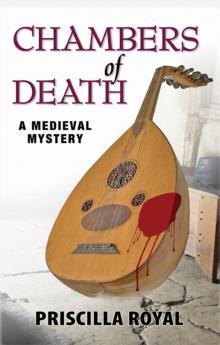 Chambers of Death mm-6
Chambers of Death mm-6 Forsaken Soul
Forsaken Soul Covenant With Hell (Medieval Mysteries)
Covenant With Hell (Medieval Mysteries)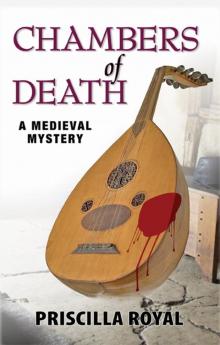 Chambers of Death
Chambers of Death Tyrant of the Mind
Tyrant of the Mind Wild Justice
Wild Justice Sorrow Without End
Sorrow Without End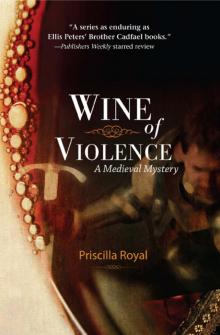 Wine of Violence
Wine of Violence Tyrant of the Mind mm-2
Tyrant of the Mind mm-2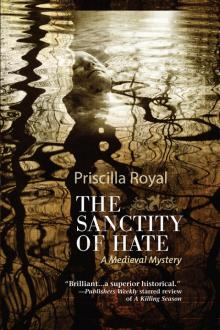 The Sanctity of Hate
The Sanctity of Hate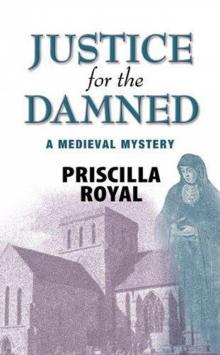 Justice for the Damned
Justice for the Damned The Proud Sinner
The Proud Sinner A Killing Season mm-8
A Killing Season mm-8 Forsaken Soul mm-5
Forsaken Soul mm-5 Valley of Dry Bones mm-7
Valley of Dry Bones mm-7 Valley of Dry Bones
Valley of Dry Bones Justice for the Damned mm-4
Justice for the Damned mm-4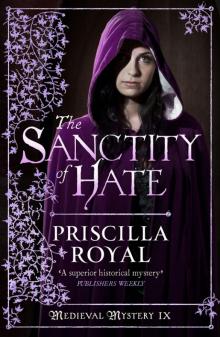 Sanctity of Hate
Sanctity of Hate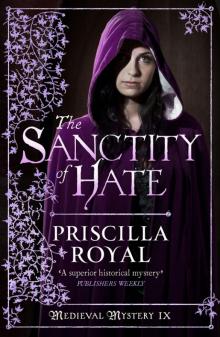 Sanctity of Hate mm-9
Sanctity of Hate mm-9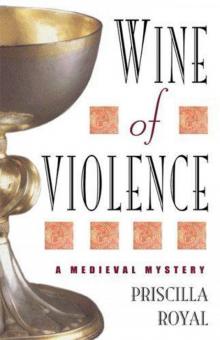 Wine of Violence mm-1
Wine of Violence mm-1